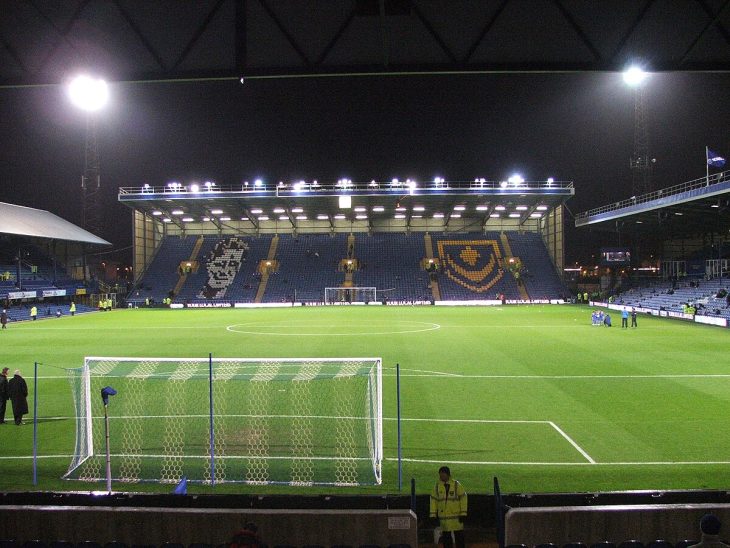
Word of the Day: Sward
Today’s word of the day is sward, which can be a noun or a verb. As a noun, it means “the grassy surface of land; turf; a stretch of turf; a growth of grass.” As a verb, it an be either transitive (meaning it takes a direct object) or intransitive. As a transitive verb, it means “to cover with sward or turf.” As an intransitive verb, it means “to become covered with sward” (https://www.dictionary.com/browse/sward). I have to admit that I do not really get how sward is used as an intransitive verb; whenever I try to construct such a sentence, I just turn sward into a passive voice verb.
We have a number of words in English that can be either a noun or a verb, but you can usually distinguish them by pronunciation. For instance, the noun construct (emphasis on the first syllable) and the verb construct (emphasis on the second syllable); or the noun contrast with the verb contrast (with the same change in stress). But there is no way to distinguish between the noun sward and the verb sward, except for the context or the structure of the sentence in which it is used.
Sward first appears in the language “c. 1300, ‘turf, sod,’ a specialized use from Old English sweard ‘skin, hide, rind’ (of bacon, etc.), from Proto-Germanic *swardo– (source also of Old Frisian swarde ‘skin of the head,’ Middle Dutch swarde ‘rind of bacon,’ Dutch zwoord ‘rind of bacon,’ German Schwarte ‘thick, hard skin, rind,’ Old Norse svörþr ‘walrus hide’). Boutkan gives it no IE etymology and calls it ‘Probably a Northern European substratum word.’
“The meaning ‘sod, turf’ developed from the notion of the ‘skin’ of the earth (compare Old Norse grassvörðr, Danish grønsvær ‘greensward’)” (https://www.etymonline.com/search?q=sward). “
We seem to have another example of a word which moves from a more literal meaning (“skin”) to a more metaphorical meaning (“skin of the Earth”).
Part of my approach to this little blog is to consult the On This Day website. If I find something that looks interesting, I will then read up on it, hoping that it might make interesting material for both my readers. But sometimes I see something on On This Day that doesn’t actually jibe with what I read when I research a topic. That’s the case today. The website says that on this day in 1956, “1st English soccer match at Kunstlicht: Portsmouth vs Newcastle United” (https://www.onthisday.com/events/february/22).
Unfortunately, the assertion is both confusing and wrong.
When you read that sentence, you get the idea that Kunstlicht is a pitch, a stadium, the place where Newcastle and Portsmouth played this historic match. But you would be wrong.
First, Kuntslicht is a German words that means “artificial light” (Kunts means “art”). But the use of artificial light in sports vastly predates World War II. In fact, it predates World War I.
According to Football Stadiums, in a piece called “The History of Floodlights in Football,” the first sport to use flood lights was polo: “On the 18th of July 1878 a game was played in Fulham between Ranelagh Polo Club and the Hurlingham Club and the new technology helped the two clubs to see out their match into the evening” (https://www.football-stadiums.co.uk/articles/history-of-floodlights-in-football/). Next was football: “English football was straight onto using the technology at the same time as polo. An experimental game was played under floodlights at Bramall Lane in Sheffield in 1878.
Clubs began to put up temporary lights for night-time football, but the Football Association (the F.A.) refused to allow official matches. Eventually, the FA gave in, especially since Southampton was leading the way by installing permanent electric lights at The Dell in 1950. Finally, the first official game played under lights happened on October 1, 1951 (ibid.) More was to come: “The first international game to be played under floodlights was England v Spain on the 30th of September 1955, with England winning the match at Wembley by four goals to one. On the 22nd of February 1956 Portsmouth played Newcastle in a game at Fratton Park under floodlights, with the match becoming the first official Football League game to be played with the now ever popular technology aiding the players’ performances and the supporters’ enjoyment” (ibid.). Notice that that February 22nd game was held at Fratton Park, not at Kunstlicht. By the way, Fratton Park was built in 1899 and is still the home of Portsmouth, and it is the only football stadium not on the British mainland but instead on Portsea Island.
One other little thing about English football: they don’t call the ground where the games are held fields but rather a pitch, even though, since the advent of lights they are rarely dark. And they spend a lot of money on their pitches, especially at the premier level. They use very nice sward.
Today’s image is of Fratton Park. You can see the floodlights and the very nice sward that makes up the pitch. This image, which was originally posted to Flickr, was uploaded to Commons using Flickr upload bot on 1 January 2011, 11:36 by Kafuffle.